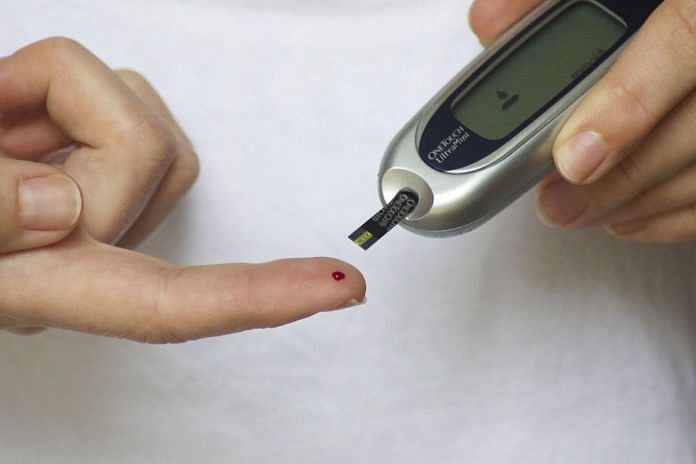Our skin does more than just add to our physical appearance—it is also a marker of our health. The largest human organ, changes in your skin can indicate changes in your body, which are often caused by life-altering diseases such as diabetes. Unusual skin ailments can be a tell-tale sign of out-of-control diabetes and deserve immediate medical attention.
Dry, itchy skin
One of the most common physical changes resulting from diabetes is dry, itchy skin with discoloured patches and altered texture. High blood sugar levels in diabetics can cause such complications as they damage the blood vessels and nerves supporting the skin. Moreover, if patients don’t hydrate or moisturise enough, their skin can crack, peel and become prone to infections.
Bacterial infections
People with diabetes are more susceptible to bacterial infections such as styes, boils, folliculitis (inflamed hair follicles), carbuncles (abscesses) and paronychia (nail infection). These infections are characterised by swollen, red and painfully inflamed tissues and are caused by the Staphylococcus or staph bacteria.
While the advent of antibiotics and improved glucose control methods have reduced fatalities from such infections, people with diabetes are still at an elevated risk. Proper skin care and timely medical intervention can prevent this.
Also read: Don’t fall for extensive skin care during winter. Fix dryness, dullness with these steps
Slow healing of cuts and wounds
Diabetes can slow the healing of cuts and wounds, as changes in blood vessels make it more difficult for blood to flow to the site of an injury. This slow healing process can cause serious infections in patients, which is why it is important to be thorough with cleaning and treating the affected area. You should also monitor the wound carefully for redness, swelling, and discharge.
Necrobiosis lipoidica
This condition begins with tiny, raised papules or bumps resembling pimples and evolves into firm inflamed patches with a lustrous, waxen texture and yellow or reddish-brown pigmentation.
Necrobiosis lipoidica is linked to alterations in blood vessel walls, resulting in the accumulation of immune cells and other substances in the skin. Although more prevalent among diabetics, it can also affect non-diabetic individuals.
Also read: That anti-bacterial facewash you’re using every day is killing your skin. Go probiotic
Acanthosis nigricans
Did you know a dark, velvety patch on your neck, armpits, or groin could indicate prediabetes? This condition is called acanthosis nigricans, caused by excessive insulin in your blood. It often appears as darker skin in creases and folds of the body and can be the first sign of diabetes.
Blisters
Bullosis diabeticorum, or diabetic bullae, is a rare condition where people with diabetes develop blisters on their skin. These blisters can appear suddenly on the hands, feet, legs, or forearms and look similar to blisters that form after a burn. However, unlike burn blisters, they aren’t painful.
Shin spots
Diabetic dermopathy induces subtle skin depressions on the shins, commonly as brown spots or lines. Nevertheless, it can manifest in other regions of the body, such as the thighs, arms, or torso. These spots are often mistaken for age spots because they cause no symptoms and may fade after 18 to 24 months. However, they can also stay on the skin indefinitely.
Skin fatigue
Fatigue can also affect a diabetic individual’s physical appearance by causing dark circles and bags under the eyes, making them look tired and rundown.
Physical alterations due to weight gain
Diabetes can elicit physical alterations such as weight gain, obesity, and escalated abdominal adiposity (visceral fat around the stomach). Insulin resistance, commonly observed in type 2 diabetes, can foster surplus fat accumulation, inducing weight gain. Certain diabetes medications, including sulfonylureas and insulin, can also prompt weight gain and in turn, stretch marks and cellulite.
Also read: Vit C serums to laser hair removal—DIY skincare on Instagram can be lethal for your skin
Acheocodons or skin tags
Insulin resistance and prediabetes are frequently asymptomatic, but they can cause hormonal imbalances and trigger the overproduction of skin cells, which, in turn, can lead to skin tags or Acheocodons. These small, flesh-coloured growths can appear on various body parts, such as the neck, armpits, and groin. One can get a simple Radio Frequency or RF treatment at a dermatology clinic to remove them.
Alopecia aereata
Alopecia Aereata, a subtype of Alopecia, is commonly seen as an autoimmune disorder. But diabetes can also prompt patchy hair loss on the scalp, eyebrows, and eyelashes. Diabetes can cause hormonal imbalances that lead to such excessive hair fall. Furthermore, poor blood circulation can impair the hair follicles’ ability to grow new hair.
Fungal Infections
Fungal infections, commonly caused by a yeast called Candida albicans, are a recurrent problem among individuals with diabetes. This fungus can lead to itchy rashes, redness, and tiny blisters or scales in warm, moist skin or cutaneous folds. These vulnerable spots include interdigital webs (membranes between your fingers), submammary creases (areas under your breasts), nail beds and genitalia. Common fungal infections comprise athlete’s foot, jock itch, ringworm, and vaginal yeast infection.
Managing diabetic skin
People with diabetes should practice good blood sugar management, avoid using harsh chemicals on their hair and skin, moisturise regularly, avoid hot showers, use mild soap, follow a healthy diet, exercise regularly, get enough sleep, and take medications as prescribed.
Taking care of your skin and keeping a watchful eye on alterations is also essential. Undergo diabetes screening and develop a personalised skincare plan with your dermatologist. After all, our skin deserves the same care and attention as the rest of our body.
Dr Deepali Bhardwaj is a dermatologist, anti-allergy specialist, laser surgeon and internationally trained aesthetician. She tweets @dermatdoc. Views are personal.
(Edited by Zoya Bhatti)



